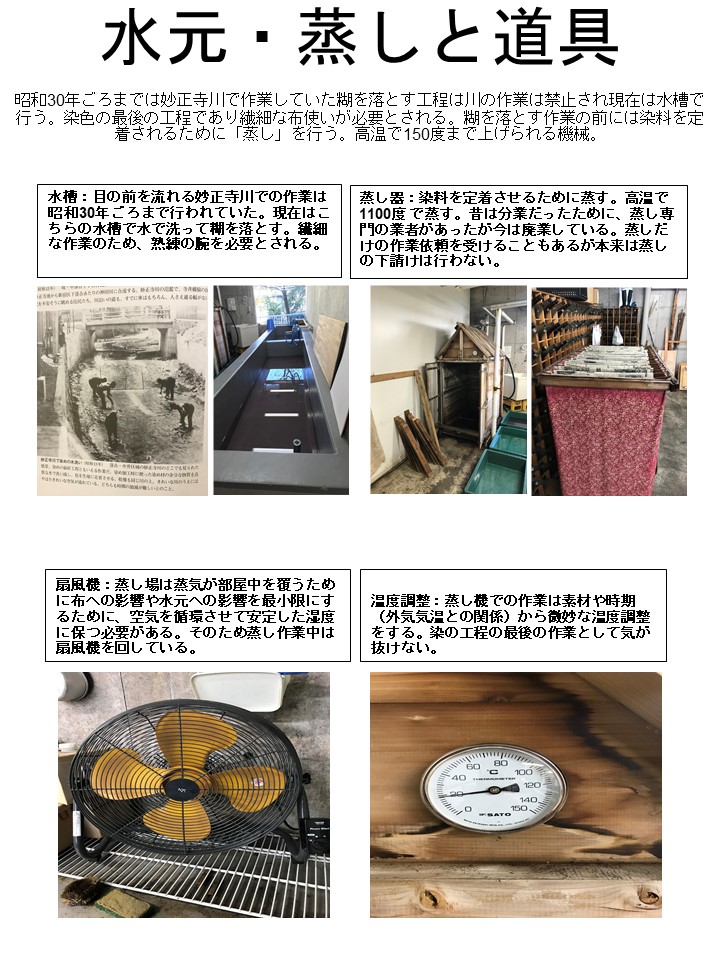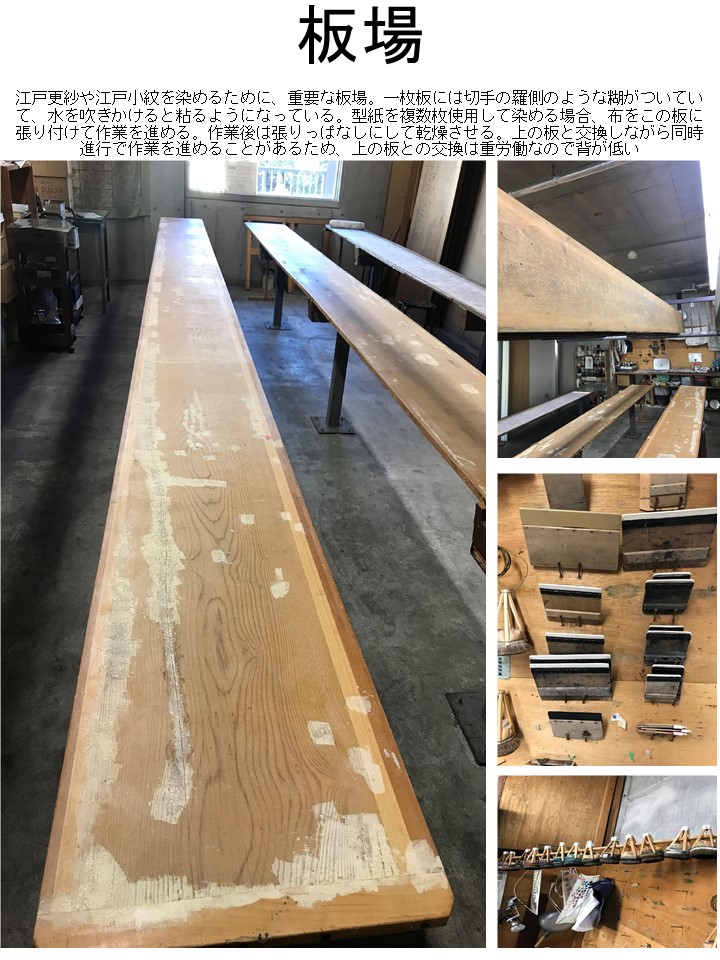染の里おちあい(二葉苑)をご案内します。
染の里おちあいは100年継続する染工房です。初代小林氏から受け継いだ精神と技術を未来100年につなぐために、職人スタッフともに着物や帯で制作、および技術の継承のための教室や体験を日々行っております。
Somenosato Ochiai is a dyeing Manufacturer that has been running for 100 years. In order to connect the spirit and technology inherited from the first Mr. Kobayashi to the future 100 years, we work with kimono and obi together with the craftsmen, and we hold classes and experiences every day to pass on the technology
.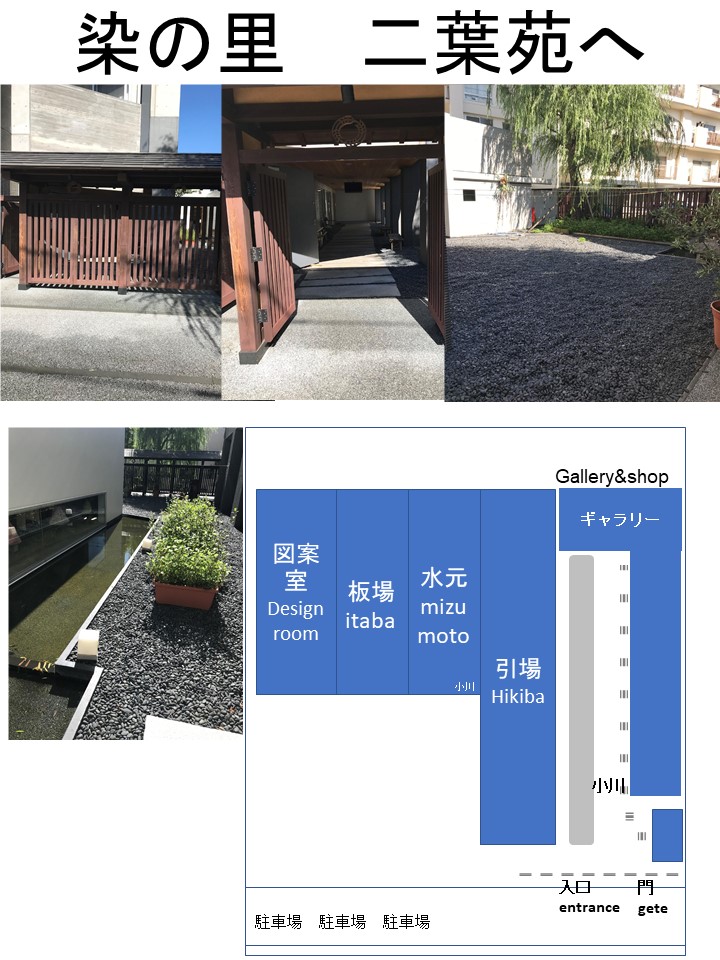
gallery&shop have somenosato futabaen so all hand made item
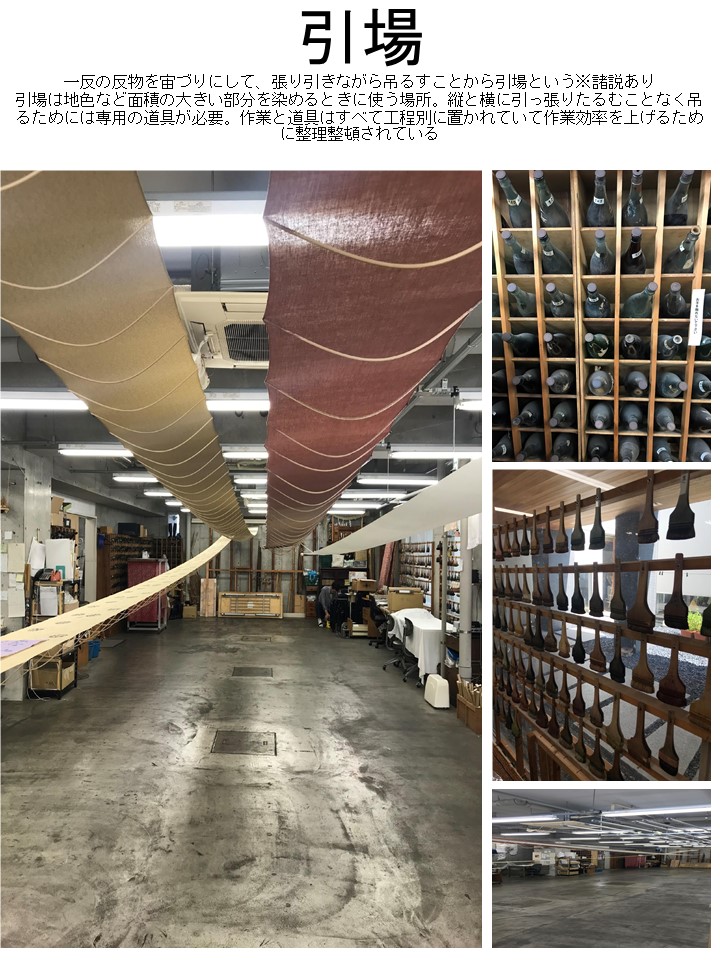
Hikiba Hikiba(hiki meas topull) is called Hikiba because it hangs a kimono cloth in the air by pulling it. * There are various theories. Hikiba is a place used to dye large areas such as the ground color. A special tool is required to hang it without to pull it vertically and horizontally. All work and tools are preparted depending process and organized to improve work efficiency.
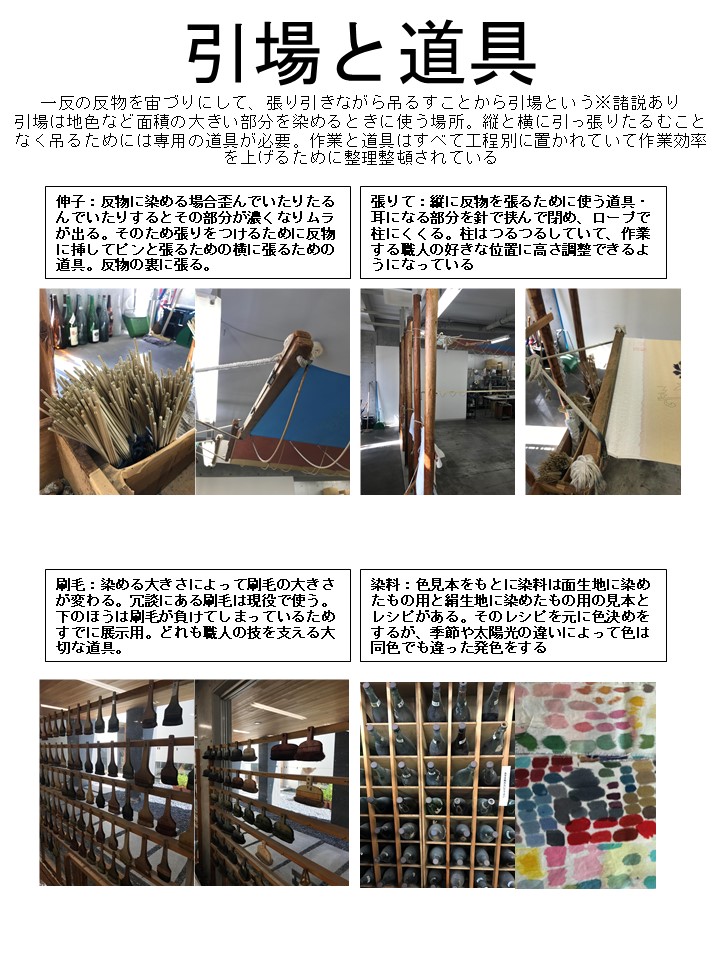
一反の反物を宙づりにして、張り引きながら吊るすことから引場という※諸説あり
引場は地色など面積の大きい部分を染めるときに使う場所。縦と横に引っ張りたるむことなく吊るためには専用の道具が必要。作業と道具はすべて工程別に置かれていて作業効率を上げるために整理整頓されている
Hikiba Hikiba(hiki meas topull) is called Hikiba because it hangs a kimono cloth in the air by pulling it. * There are various theories. Hikiba is a place used to dye large areas such as the ground color. A special tool is required to hang it without to pull it vertically and horizontally. All work and tools are preparted depending process and organized to improve work efficiency.
伸子:反物に染める場合歪んでいたりたるんでいたりするとその部分が濃くなりムラが出る。そのため張りをつけるために反物に挿してピンと張るための横に張るための道具。反物の裏に張る。
Shinshi When dyeing a long of cloth, if it is distorted or with slack, that part becomes uneven and darker. Therefore, this tool I used by putting if on the cloth to make it taut and flat on the sideways it is Put on the back of the cloth.
張手:縦に反物を張るために使う道具・耳になる部分を針で挟んで閉め、ロープで柱にくくる。柱はつるつるしていて、作業する職人の好きな位置に高さ調整できるようになっている
Harite: A tool used to stretch the kimono cloth vertically. ・ Close the part that will be the ear with a needle, and use a rope to make it difficult to pillar. The pillars are slippery, and the height can be adjusted to the desired position of the craftsman who work
刷毛:染める大きさによって刷毛の大きさが変わる。小さい刷毛は1㎜地色を染めるものは大きいもので20センチにもなる
Small brushes that dye 1 mm of ground color are large and can reach up to 20 cm
Brush: The size of the brush changes depending on the size to be dyed. The brush in the upper row is used in active duty. The lower one is already for exhibition because the brush has lost. All are important tools that support craftsmanship
染料:色見本をもとに染料は綿生地に染めたもの用と絹生地に染めたもの用の見本とレシピがある。そのレシピを元に色決めをするが、季節や太陽光の違いによって色は同色でも違った発色をする
Dyes: Based on color samples, there are samples and recipes for dyes dyed on cotton fabrics and those dyed on silk fabrics. The color is decided based on the samples, but there are subtle changes depending on the season and cloth and sunlight.
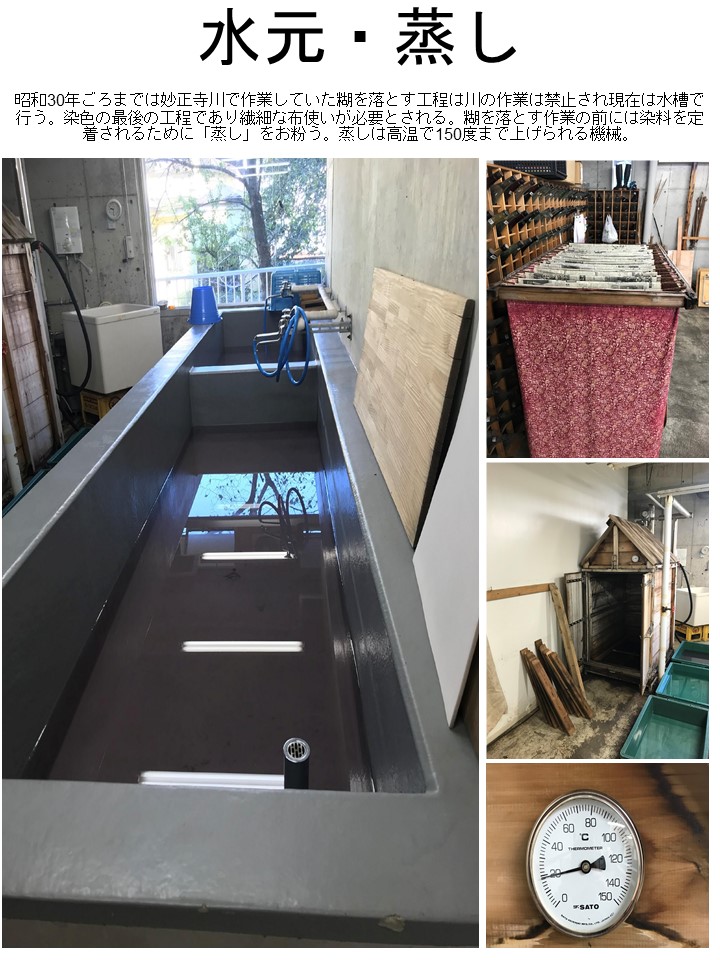
Until around 1955, the process of removing glue, which had been done in the Myoshoji River, is prohibited in the river and is now done in the aquarium. This is the final step of dyeing and requires delicate cloth usage. Before the work of removing the glue, “steam” is powdered to fix the dye. Steaming is a machine that can raise the temperature to 150 degrees at high temperatures.
